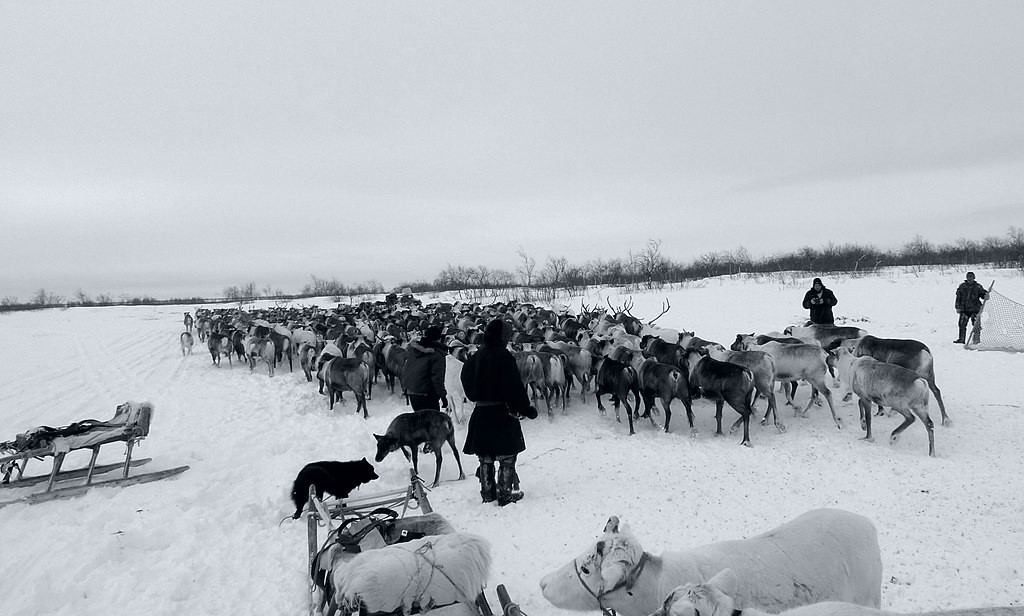In 1894 Sheldon Jackson, a crusading Presbyterian minister and educator in Alaska, brought Norwegian reindeer to the Great Land. Using Sitka, the former Russian capitol, as his base, Jackson conceived his reindeer project as a commercial venture and source of food for the Inuit or Eskimo people in the far north. He also enlisted Lapplanders, known as Sami, to herd the reindeer.
Working with the U.S. Department of Interior, Jackson’s brightly-garbed band of Sami herders caused a sensation upon their arrival in New York, San Francisco, and at other stops along the way. The Sami wardrobe consisted of reindeer skin coats, trousers, and moccasins, festooned with carved baubles and colored tassels.
At first, tribal difficulties arose between the Inuit and Chukchi peoples. With the next group, Jackson applied rules, help choose respected leaders, and eliminated the Chukchi. Jackson’s entourage and the reindeer project garnered wide publicity and caused excitement throughout Alaska and elsewhere. Jackson nevertheless maintained control of the herds and herders, parceling out sections of the project to Christian missions enroute.
In 1897 the Alaska Gold Strike attracted more attention to the project. Jackson pointed out that gold miners would need food and reindeer meat was the answer. The Gold Rush convinced Jackson to send for more Sami herders and Norwegian reindeer. When the 1898 contingent arrived in Seattle it learned that no ship was readily available. The strange collection of reindeer, herders, and equipment (food was foraged at each stop) were taken to Woodland Park. Seattleites came in droves to gaze on this exotic sight.
When the first two-year enlistment of Sami herdsmen expired, several Natives chose to return to Norway, a few signed on for another term in Alaska, and others migrated south to Seattle and Poulsbo. Poulsbo boasts an active Sami sub-colony today and the fishing town’s large Norwegian contingent welcomed the newcomers.
The contribution of Sami herders to Alaska’s Native population became significant. Sami women taught the Inuit how to make clothes from animal skins; how to make butter and cheese from reindeer milk; and how to cook and dry reindeer meat. Soon, cultural celebrations in Alaska featured competition in herding skills and races.
However, by the 1930s the market for reindeer products was waning. The Reindeer Act of 1937 placed the management of herds under the Bureau of Indian Affairs and restricted the ownership of reindeer to Inuit. It was clear that the Sami herders had served their purpose. Those who remained in Alaska eventually returned to Norway or joined their countrymen in Poulsbo and Seattle.
In later years the Seattle-based Nordic Museum held an exhibition of Sami art. Montana State University sponsored Sami-U.S. Indian international educational and cultural exchanges. These few relatively unheralded events were evidence of this long-ago connection between Norway’s Sami – or Lapplanders – and the Pacific Northwest.
